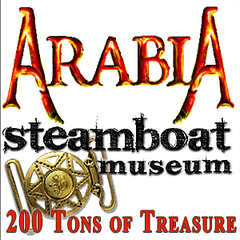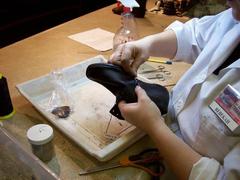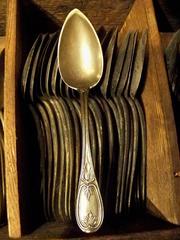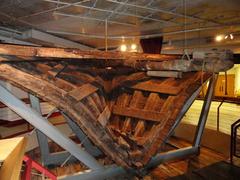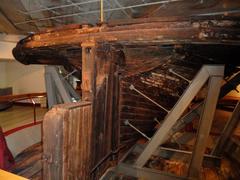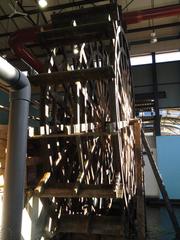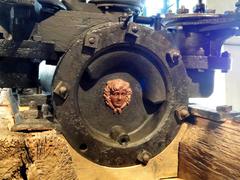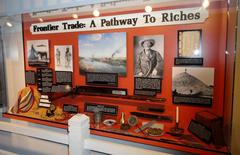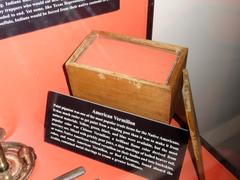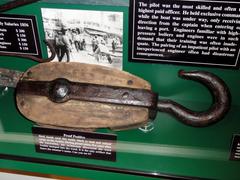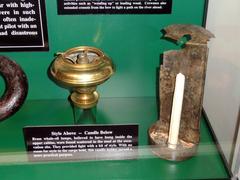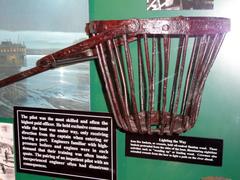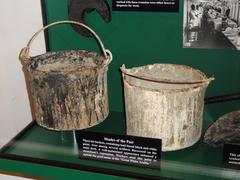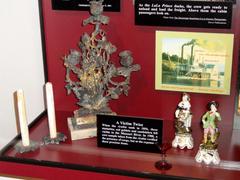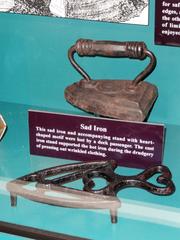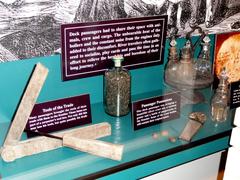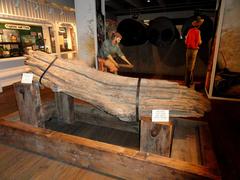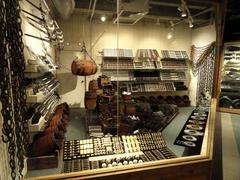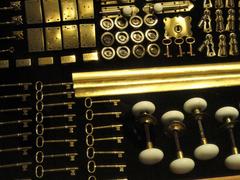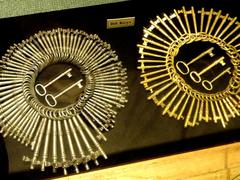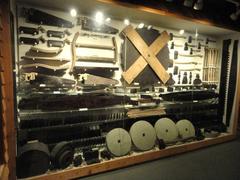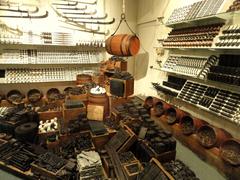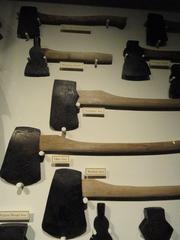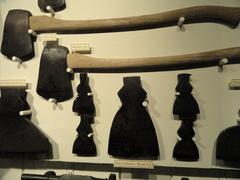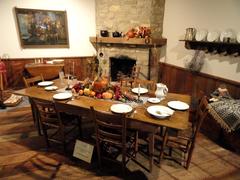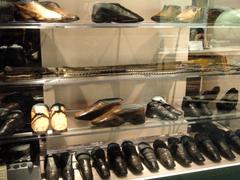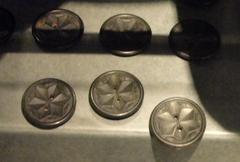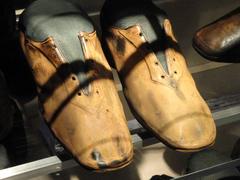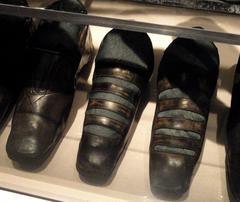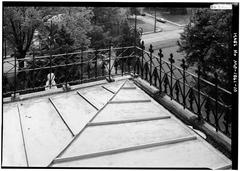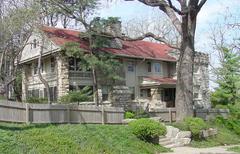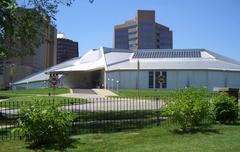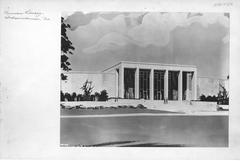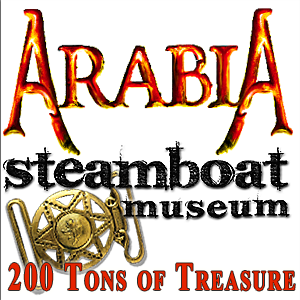
Comprehensive Guide to Visiting Arabia Steamboat Museum, Kansas City, United States
Date: 18/07/2024
Introduction
Nestled in the heart of Kansas City, Missouri, the Arabia Steamboat Museum offers an unparalleled glimpse into 19th-century American frontier life. This museum not only chronicles the fascinating history of the ill-fated Arabia Steamboat but also provides an immersive experience through its extensive collection of remarkably well-preserved artifacts. Whether you’re a history enthusiast or simply looking for an engaging activity, the Arabia Steamboat Museum is a must-visit destination. The museum’s exhibits, which include over 200 tons of cargo and personal items, allow visitors to step back in time and explore the daily lives of those who depended on the steamboat. In this comprehensive guide, we will delve into the history of the Arabia Steamboat, practical visitor information, and tips to enhance your visit, ensuring a memorable and educational experience.
Table of Contents
- Introduction
- The Construction and Early Years
- The Final Voyage
- Rediscovery and Excavation
- Preservation and Display
- Visitor Information
- Significance of the Discovery
- The Museum Experience
- Educational Programs and Events
- Nearby Attractions
- FAQ
- Conclusion
The Construction and Early Years
The Arabia Steamboat was constructed in 1853 in Brownsville, Pennsylvania. It was a side-wheeler steamboat, a common design for riverboats of that era, measuring 171 feet in length and 29 feet in width. The vessel was designed to navigate the treacherous waters of the Missouri River, which was notorious for its shifting sandbars and submerged snags. The Arabia was powered by a high-pressure steam engine, which was a technological marvel at the time, allowing it to carry up to 222 tons of cargo and passengers (Arabia Steamboat Museum).
The Final Voyage
On September 5, 1856, the Arabia embarked on what would be its final voyage. The steamboat was loaded with 200 tons of cargo, including household goods, tools, and luxury items, destined for 16 frontier towns along the Missouri River. The journey was perilous, and the river’s unpredictable nature posed constant threats. On September 5, the Arabia struck a submerged walnut tree snag near Parkville, Missouri. The snag tore through the hull, and within minutes, the steamboat began to sink. Remarkably, all 130 passengers and crew members survived, but the vessel and its cargo were lost to the river (Kansas City Star).
Rediscovery and Excavation
The Arabia remained buried in the river’s silt for over a century. In 1987, a group of amateur archaeologists led by Bob Hawley and his sons, Greg and David, decided to search for the lost steamboat. Using historical maps and a proton magnetometer, they pinpointed the location of the Arabia, which was now buried 45 feet underground in a Kansas cornfield, due to the river’s course changing over the years (Smithsonian Magazine).
The excavation began in November 1988 and took four months to complete. The team unearthed the steamboat and its cargo, which had been remarkably preserved in the anaerobic conditions of the river silt. The discovery included over 200 tons of artifacts, ranging from fine china and clothing to tools and foodstuffs. This treasure trove provided an unprecedented glimpse into life on the American frontier in the mid-19th century (National Geographic).
Preservation and Display
The artifacts recovered from the Arabia were meticulously cleaned, cataloged, and preserved. The Hawley family decided to create a museum to share their findings with the public. The Arabia Steamboat Museum opened in 1991 in Kansas City, Missouri. The museum’s exhibits include the fully restored hull of the Arabia, along with thousands of artifacts that tell the story of the steamboat’s final voyage and the lives of the people who depended on its cargo (Arabia Steamboat Museum).
Visitor Information
For those planning a visit to the Arabia Steamboat Museum, here are some essential details to ensure a memorable experience:
- Visiting Hours: The museum is open Monday through Saturday from 10:00 AM to 5:00 PM, and Sunday from 12:00 PM to 5:00 PM.
- Ticket Prices: General admission is $14.50 for adults, $13.50 for seniors (60+), $5.50 for children (4-12), and free for children under 4. Group rates are available for parties of 15 or more.
- Special Events: The museum hosts various special events throughout the year, including lectures, workshops, and themed tours. Check the museum’s website for the latest schedule and event details.
Significance of the Discovery
The discovery of the Arabia Steamboat is significant for several reasons. Firstly, it provides a unique snapshot of mid-19th century American life, particularly in the frontier regions. The artifacts recovered from the steamboat offer insights into the daily lives, trade practices, and material culture of the time. Items such as clothing, tools, and household goods reveal the types of goods that were in demand and the level of craftsmanship available.
Secondly, the excavation of the Arabia is a remarkable example of underwater archaeology. The preservation of the artifacts in the anaerobic conditions of the river silt is a testament to the power of natural preservation processes. The excavation techniques used by the Hawley family and their team have been studied and emulated by archaeologists around the world (Archaeology Magazine).
The Museum Experience
Visitors to the Arabia Steamboat Museum can expect an immersive experience. The museum’s exhibits are designed to transport visitors back to the 1850s, with detailed recreations of the steamboat’s interior and displays of the artifacts recovered from the wreck. Interactive exhibits allow visitors to handle some of the artifacts and learn about the excavation process. The museum also offers guided tours, which provide in-depth information about the history of the Arabia and the significance of its discovery (Visit KC).
Educational Programs and Events
The Arabia Steamboat Museum offers a range of educational programs and events for visitors of all ages. School groups can participate in guided tours and hands-on activities that align with state educational standards. The museum also hosts lectures, workshops, and special events that delve deeper into the history of the Arabia and the broader context of 19th-century American river travel. These programs are designed to engage visitors and foster a deeper understanding of the historical significance of the Arabia Steamboat (Arabia Steamboat Museum).
Nearby Attractions
While visiting the Arabia Steamboat Museum, take the opportunity to explore other attractions in Kansas City. Nearby points of interest include the National World War I Museum and Memorial, the Nelson-Atkins Museum of Art, and the Kansas City Zoo. These sites offer a diverse range of experiences for visitors of all ages.
FAQ
Q: What are the Arabia Steamboat Museum’s visiting hours? A: The museum is open Monday through Saturday from 10:00 AM to 5:00 PM, and Sunday from 12:00 PM to 5:00 PM.
Q: How much do tickets cost? A: General admission is $14.50 for adults, $13.50 for seniors (60+), $5.50 for children (4-12), and free for children under 4. Group rates are available for parties of 15 or more.
Q: Is the museum accessible for visitors with disabilities? A: Yes, the museum is wheelchair accessible and provides accommodations for visitors with special needs.
Q: Are there any special events at the museum? A: Yes, the museum hosts various special events throughout the year, including lectures, workshops, and themed tours. Check the museum’s website for the latest schedule and event details.
Conclusion
The Arabia Steamboat Museum offers a unique and engaging experience for visitors interested in American history, archaeology, and life on the frontier. By planning your visit and taking advantage of the museum’s interactive exhibits and educational programs, you can gain a deeper appreciation for this fascinating chapter in American history. Don’t miss out on this incredible opportunity to step back in time and explore the story of the Arabia Steamboat.
References
- Arabia Steamboat Museum https://www.1856.com
- Kansas City Star https://www.kansascity.com
- Smithsonian Magazine https://www.smithsonianmag.com
- National Geographic https://www.nationalgeographic.com
- Archaeology Magazine https://www.archaeology.org
- Visit KC https://www.visitkc.com
